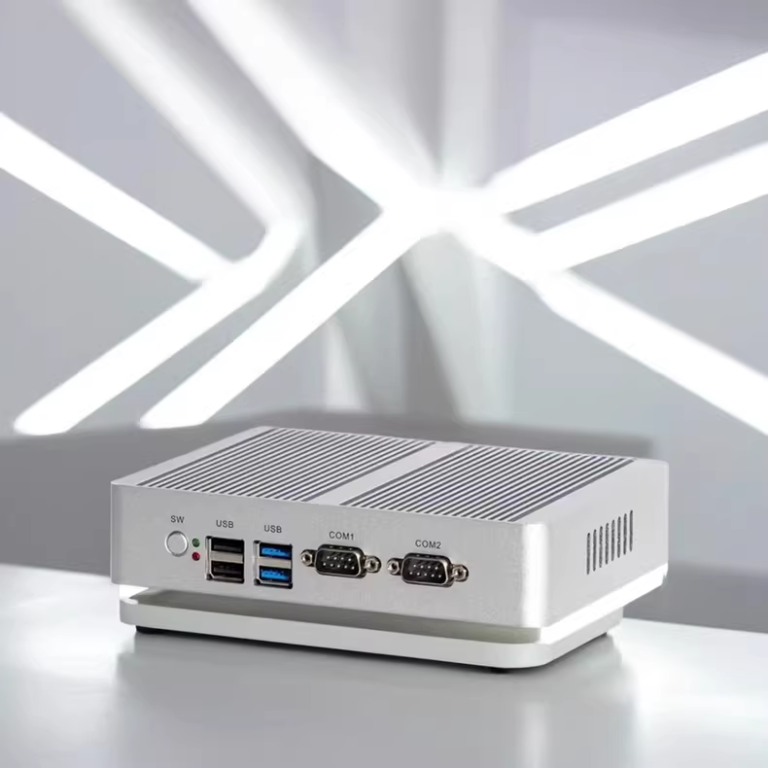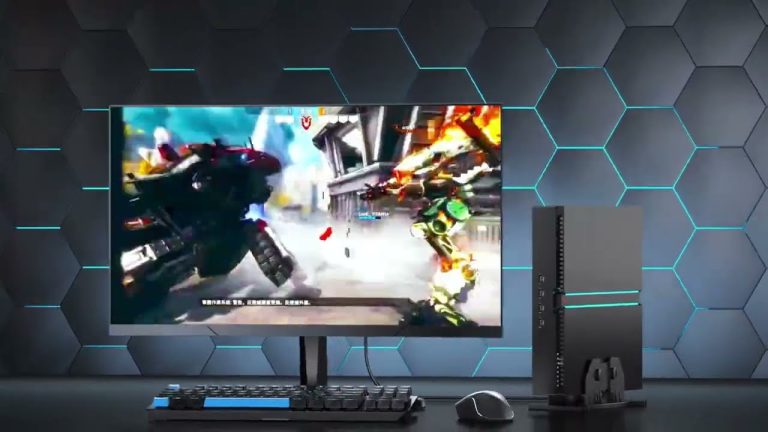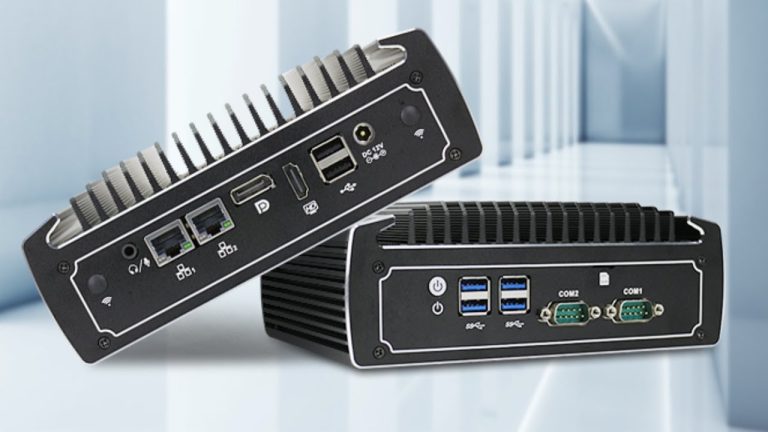The choice between a Mac mini and a Windows mini PC is like selecting between two distinct philosophies of technology. The Mac mini, with its sleek design and Apple’s powerful M-series chips, offers a seamless, efficient experience within the Apple ecosystem. Meanwhile, Windows mini PCs provide a world of customization, diverse hardware options, and compatibility that can be tailored to varied needs. This guide explores the essence of each option, helping you find the perfect fit for your personal or professional journey.
Performance and Hardware
The newest Mac mini models are powered by Apple’s M4 and M4 Pro chips, designed specifically for optimized performance across various tasks. The M4 chip includes a 10-core CPU and 10-core GPU, while the M4 Pro features a 12-core CPU and up to a 16-core GPU. These configurations are ideal for users needing powerful computing capabilities, whether for daily tasks or professional workloads like video editing, graphic design, and software development. Apple’s silicon is known for its efficiency, giving the Mac mini a unique edge in performance per watt.
Windows mini PCs offer a broader range of processors, from Intel Core i3/i5/i7 to AMD Ryzen models, catering to a variety of performance needs and budgets. High-end options, such as the Intel NUC 14 Pro or the ASUS ROG G15 Mini, come with dedicated graphics cards and high-speed processors that match the performance of many full-sized desktops. Windows mini PCs allow more flexibility in hardware selection, making it easier to find models suited for gaming, 3D modeling, and heavy multitasking.
Operating System and Software Compatibility
macOS Ventura (and beyond) is known for stability, optimized resource management, and intuitive interfaces. The Mac mini is ideal for users who prefer macOS-exclusive software like Final Cut Pro, Logic Pro, and other professional-grade Apple applications. The seamless integration with other Apple devices (iPhone, iPad, Apple Watch) through iCloud, AirDrop, and Handoff is a significant advantage for those in the Apple ecosystem.
Windows 11 is more widely compatible with a broad range of software, from business applications to PC games. It’s also highly customizable, offering users more control over their system settings and configuration. Windows mini PCs support Microsoft’s extensive suite of software, enterprise applications, and compatibility with a vast selection of peripherals, which is particularly advantageous for professional users requiring specialized software or gamers looking for a flexible platform.
Design, Build, and Expandability
Apple’s latest Mac mini is compact, featuring a minimalist design crafted from aluminum. It’s ideal for users needing a space-efficient solution, as it takes up minimal desk space and remains exceptionally quiet under heavy use. However, the Mac mini is not upgradable after purchase, as memory and storage are soldered onto the motherboard. Users who need more memory or storage options must configure these during purchase, limiting future expandability.
Windows mini PCs come in various designs, from ultra-compact models to larger cases with room for additional components. Many models, like the Intel NUC series, allow users to upgrade RAM and storage, giving them more flexibility to adapt to future needs. High-end models also come with options for discrete GPUs, making them viable for users needing specialized performance, such as gamers or professionals working in creative or technical fields.
Graphics and Gaming
The M4 Pro variant of the Mac mini offers impressive integrated graphics performance, sufficient for 4K video editing and graphics-intensive applications, but it’s still limited for high-end gaming. Apple’s ecosystem also lacks support for most AAA PC games, although options like Apple Arcade and some cross-platform titles are available. The Mac mini is best suited for users with moderate graphics requirements who are not focused on gaming.
Windows mini PCs can be equipped with discrete GPUs, such as NVIDIA’s RTX series, making them far more capable for gaming and advanced graphical tasks like VR. Additionally, Windows supports a massive gaming library, including AAA titles and a variety of game stores and platforms. This makes Windows mini PCs a more suitable option for gamers or users requiring high-end graphics performance.
Price and Value
The Mac mini starts at around $599, with higher configurations reaching into the $1,399+ range. While this provides a reasonable entry point, particularly for users already invested in the Apple ecosystem, the lack of post-purchase upgrade options can limit long-term value.
Windows mini PCs are available across a wide range of prices, from budget models around $200 to high-performance models costing $1,500 or more. This range provides options for various budget and performance needs, allowing users to select a configuration that best fits their requirements without the premium often associated with Apple hardware.
Ecosystem Integration
Mac mini (Apple Ecosystem): The Mac mini seamlessly integrates with Apple’s ecosystem, enabling features like Continuity, Handoff, Universal Clipboard, and Sidecar, which allow users to expand their workflow across Apple devices. This integration is highly beneficial for users with multiple Apple devices, as it simplifies tasks like file sharing, communication, and synchronization.
Windows Mini PCs (Microsoft and Other Services): While Windows lacks Apple’s proprietary ecosystem integration, it offers versatility by integrating with Microsoft 365, OneDrive, and services like Teams. Windows mini PCs also support a vast array of third-party applications and services, providing a more open ecosystem that allows users to customize their setup.
Your Choice?
Choose a Mac mini if:
- You’re deeply invested in the Apple ecosystem.
- You prioritize energy-efficient, high-performance computing without needing future expandability.
- You prefer macOS for its stability and exclusive software options.
Or go with a Windows mini PC if:
- You need a customizable setup with potential for upgrades.
- You’re interested in gaming, high-end graphics, or specialized Windows-only applications.
- You want flexibility in hardware options to suit a wide range of budgets and performance needs.
FAQs Regarding Mac mini vs. Windows mini PC
Which is better for gaming: Mac mini or Windows mini PC?
Windows mini PCs generally perform better for gaming due to options for discrete GPUs and wider game support. Mac mini can handle lighter games, but macOS doesn’t support many AAA games.
Are both suitable for creative work?
The Mac mini works well with Apple’s creative software like Final Cut Pro, while high-end Windows mini PCs with GPUs can excel in software that requires more graphical power, like certain 3D modeling applications.
Which option is more upgradable?
Windows mini PCs are usually more flexible, allowing for RAM, storage, and even GPU upgrades on some models. Mac mini components are fixed at purchase, so upgrades are limited.
How does software compatibility compare?
Windows mini PCs support a wider range of business, engineering, and gaming software, making them ideal for specialized applications. Mac mini is optimized for macOS software and Apple’s ecosystem.
Which integrates better with other devices?
The Mac mini integrates well with Apple devices, making it ideal for users in the Apple ecosystem. Windows mini PCs support a wide range of third-party devices, giving users more flexibility in mixed-device setups.
Is there a difference in energy efficiency?
Mac mini is generally energy-efficient with Apple’s M-series chips. Windows mini PCs vary; some models focus on efficiency, while high-performance versions may consume more power.
How does multi-monitor support compare?
Mac mini supports up to two or three monitors, depending on the model. Windows mini PCs, especially those with discrete GPUs, often support more extensive multi-monitor setups and higher refresh rates.
Which has better storage flexibility?
Windows mini PCs often offer expandable storage, while Mac mini’s storage is fixed. This makes Windows mini PCs more adaptable if you need to increase storage over time.
Are both options good for running multiple operating systems?
Windows mini PCs are more versatile for dual-booting Windows and Linux. Mac mini can run Windows through virtualization software like Parallels but lacks native dual-boot support for Linux.
What about business use?
Both are good for business, with each having unique advantages. Mac mini offers excellent security and integrates with Apple products, while Windows mini PCs are highly compatible with various peripherals and enterprise software.
Which is better for a tight budget?
Windows mini PCs have a broader price range, with budget options starting around $200. The Mac mini starts at $599, offering a strong base configuration, but Windows provides more low-cost flexibility.
How do repair and warranty options compare?
Mac mini offers AppleCare+ for extended support. Windows mini PCs have varied warranty options depending on the brand; some brands provide extended coverage, while others may rely on third-party repairs.















